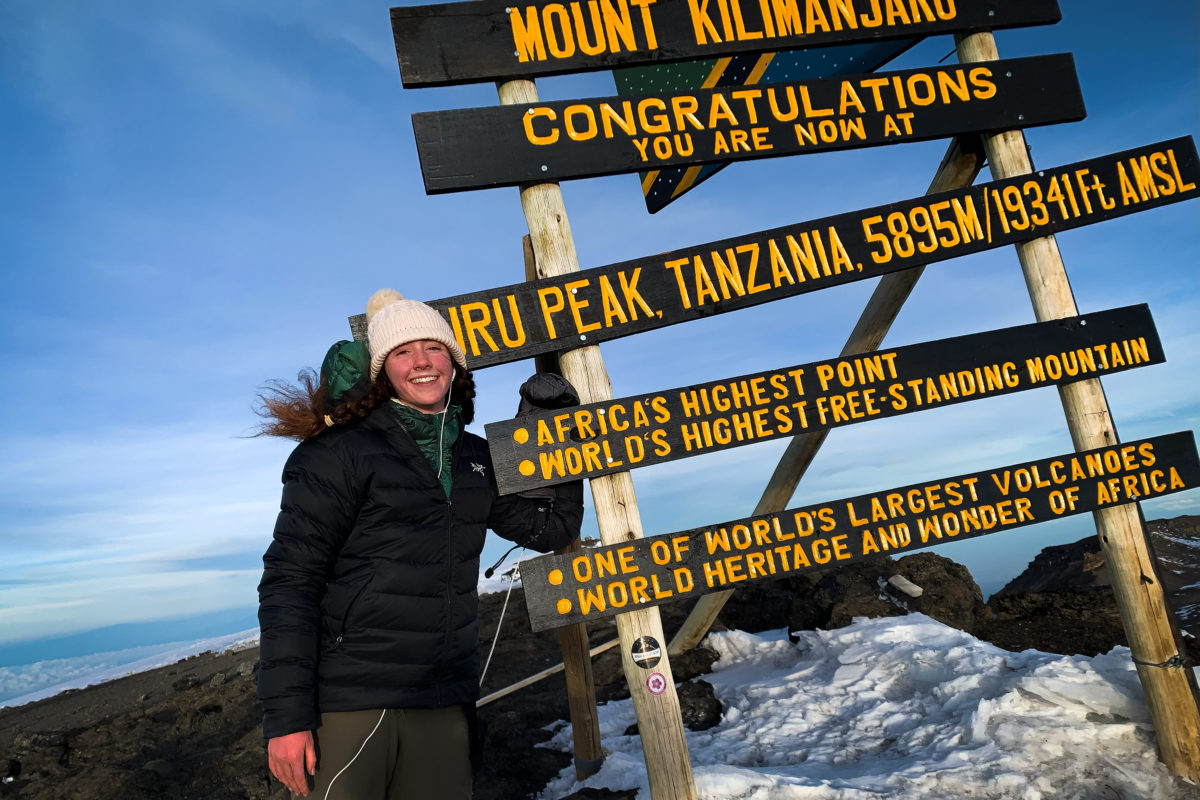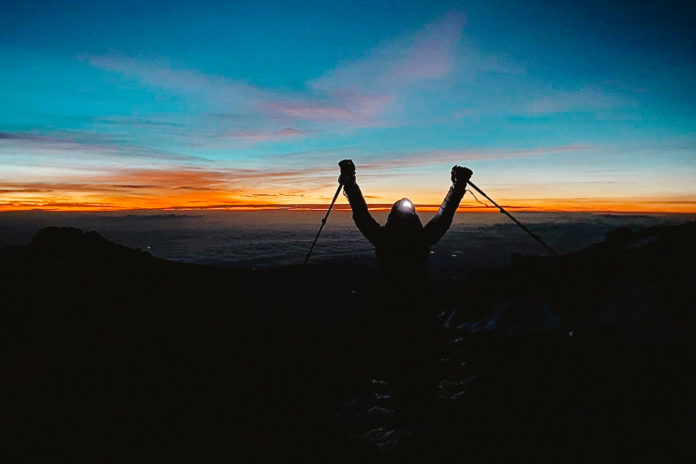Forest Jones rang in the new year with monkeys and mud while hiking the first leg of Mount Kilimanjaro. Five days later, the 17-year-old Fredericton local completed her goal of climbing the mountain in Tanzania to raise money for Feed the Lions.
Feed the Lions is a program at Leo Hayes High School that provides breakfasts and lunches for students in need. When Jones was deciding what charity to donate to, she first considered climate change, but decided to do something more local.
“Sometimes parents are like, ‘there are people starving in Africa’ — but there are people starving in our hometown,” said Jones.
Her goal was to raise $10,000 — half the program’s yearly costs. As of Sunday, Jones’ climb raised just under $15,000.
But the success of her trip did not happen overnight.
Jones had the idea right before COVID-19 started. She planned to travel to Africa with her dad, Brian Jones, who is an experienced mountaineer. The father-daughter duo canoe, kayak and hike mountains close to home like Mount Katahdin in Maine.
Jones started research and training during her special interest class at school. For two periods a day, she would train, study the mountain and work on setting up the fundraiser.
The highest peak in Africa is 5,895 meters or just below 20,000 feet. In comparison, New Brunswick’s own Mount Carleton is 820 meters.
“It’s one of the tallest mountains in the world,” she said. “But it’s also a great starter mountain to get into mountaineering.”
Unlike the peaks in the Maritimes, hikers on Kilimanjaro have to take special measures to prevent altitude sickness. To acclimatize properly, there are days of hiking where Jones would go up 5,000 feet only to go back down another 4,000. This made for a net gain of only 1,000 feet for eight or 10 hours of hiking.
“So you can get a feel for the altitude and then come back down,” said Jones. “That way your body can take in more oxygen again.”
Jones said hikers have to be extremely careful of all the cliffs. One difficult section is called Barranco wall.
“If you make one misstep around a certain rock, that people like to nickname the kissing rock, it’s going to be a really steep fall.”
Hikers must squeeze their way around a protruding boulder, on rocks that are three feet apart. To prepare for this kind of hiking, Jones had to train on uneven terrain and find the perfect pair of hiking boots. Along with her dad, she had the help of local porters who are well adjusted to the altitude.
“They’re amazing,” said Jones. “They climb that mountain every day for years and years and years.”
The climb starts in the rainforest, where there are sporadic downpours. Jones’ said when the rain started, they only had a 30-second window to change into rain gear.
The second and third days are spent in the Heather Zone. Because of the high altitude of 13,000 feet, very few things can live up there except for some birds and bugs.
Next is the Desert Zone, where the weather gets unpredictable. Jones said it can go from 36 C and sunny to snowing and freezing rain.
Closer to the top of the mountain is the Alpine Desert, where it is sunny but cold. In this zone, hikers are higher than the clouds.
“From certain camps you can see cities far away, I think you could see Arusha from a couple of other different places,” said Jones. “When you’re above the clouds, the stars are just amazing.”
Reaching the peak

They planned to reach the summit at sunrise. After four hours of sleeping in the cold, Jones’ camp woke up at 11 p.m. to start the hike at midnight. Bedecked in headlamps, ski goggles and other winter gear, they began their final ascent. This part of the hike is when a majority of injuries happen.
“It’s just so dark and if you look up, you get so dizzy it feels like you’re going to fall,” she said.
Luckily, the worst injury Jones suffered was a bad sunburn, but she saw one man carried down in a stretcher and another with a twisted ankle.
Around 4 a.m. and 17,000 feet up, Jones said she felt the lack of oxygen in her body. She remembers taking five steps then having to sit down again.
“Every step became an immense effort and I really had to work for the tiniest steps.”
In the dark, when she couldn’t see where she was going, it became more of a mental challenge than physical.
Jones had her first glimpse of the peak as the sun rose. Relieved to see she was only five minutes away from the finish, she felt a rush of adrenaline.
“It was an amazing feeling to know that you would achieve something that you’ve been thinking about for years.”
Jones and her crew spent 20 minutes in -23 C at the top of the mountain staring at the view. From that high, they could see for miles with views of the glaciers she studied at school.
“When you’re used to seeing concrete buildings every day or staring at fluorescent lights … just being in nature — it is refreshing.”
During Jones’ climb, she felt a motivating pressure to keep going. She knew that if she made it to the top, more people would donate to the fundraiser for Feed the Lions.
Tanya McBride is one of the two faculty advisors for Feed the Lions at Leo Hayes. The club started in 2013 when a custodian noticed students were lingering in the cafeteria after lunch to dig through the trash cans trying to find food to eat.
Since then, the program grew into a breakfast and lunch trolley where any student can take from a cart stocked up with sandwiches and snacks in brown paper bags.
McBride wants to keep the program anonymous and easily accessible to all students.
“[It’s for] anybody at all walking by who missed breakfast for whatever reason, or forgot one,” she said. “It’s for everybody.”
When schools closed down because of COVID-19, the teachers running Feed the Lions realized that the same kids who relied on the school-provided lunches still wouldn’t be getting the food they needed at home. So they put the program on wheels.
During those 17 months, they delivered to 36 families every week. Now that school is back, the program returned to a backpack program.
Jones’ Kilimanjaro climb for Feed the Lions helped spread awareness for the program and the influx of donations paid for over a semester of food. McBride received messages of support, e-transfers and cheques dropped off at the school.
“When they heard this story about this girl who just took it upon herself to do something of this magnitude, they just want to be a part of it,” said McBride.

